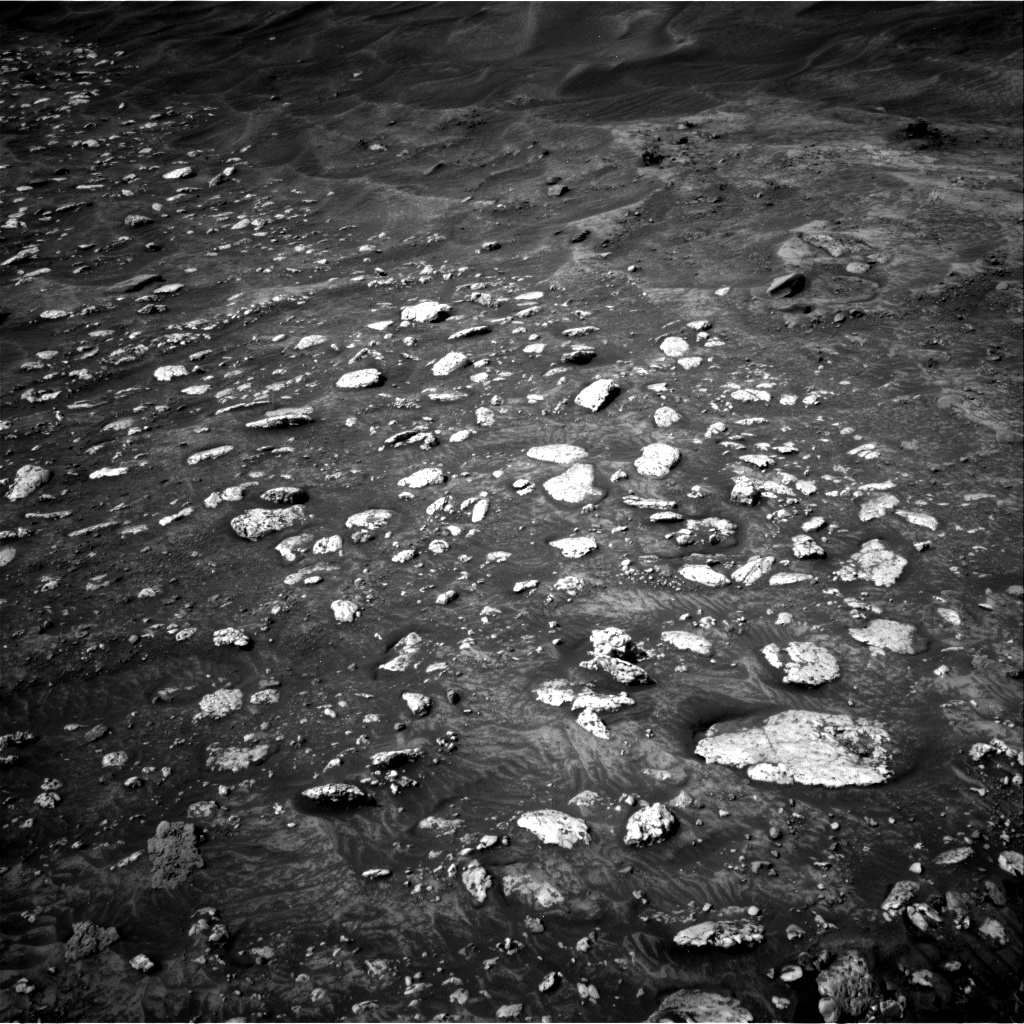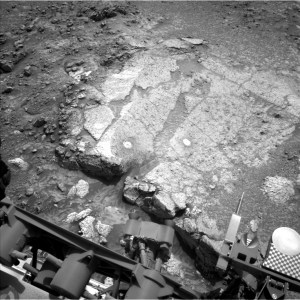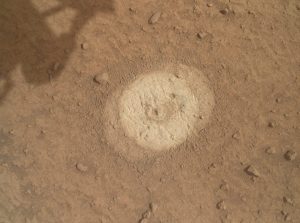6 min read

Earth planning date: Monday, June 17, 2024
Who thought it was a good idea to select a name with the word 'mammoth' in it? Well, we don't remember who did it, and if we did, we wouldn't say anyways… but these rocks take 'Mammoth Lakes' and seem to translate it into 'Mammoth Effort' for the team here on Earth! You may have seen my colleague Conor's blog about 'The best laid plans', and today we tried again.
For a start, orbital mechanics wasn't our friend on this nervous Monday morning: the data we needed reached us - as scheduled - in the early morning hours; hence assessment could only begin shortly before the normal start of the planning day. The assessment of a preload test is not a quick task as it concerns rover health and safety. Even with over 11 years of experience, engineers want to look very, very closely. Or shall I say, tongue in cheek, after over 11 years of experience we want to look even closer as we have seen many of the ways Mars rocks can play tricks on us and we are pretty sure that the rocks have even more surprises up their sleeves! We don't want to get caught out by… a rock!
With that assessment still ongoing (can you feel the nerves?!), the team had to start planning assuming we would go ahead with the drill. I was Geo Science Theme Lead today, and it was my task to help navigate through the things that we would want to do, if we pass the preload assessment and are going to drill. And it was also agreed that if this isn't going to work today, we would try another preload test. The science team really wants to see what these bright rocks are made of, as bright, almost white colour on a basaltic planet always means that it is different and interesting.. Water rock interactions are my favourite possible explanation, but I don't want to speculate, I prefer to interpret data… but those would come after the drill! Cliffhanger, part one, we kept asking those with an ear close to the engineering rooms for updates, but the only updates were that there are no updates… yet. I am not good at waiting, are you?
We were planning four sols today, but one of them is a 'soliday' - a day on Earth with no corresponding sol on Mars. They come up occasionally to re-synchronise Earth and Mars timings (and to not make downlinks even closer to start of planning). This is because an Earth day is 24 hours long, but a Mars day is 24 hours, 39 minutes, 35 seconds long. Therefore, Mars and Earth days get slowly but surely out of sync and planning would have to happen in the middle of the Earth night. Therefore, Curiosity gets a break thanks to orbital mechanics (and human sleep patterns). But just before Curiosity gets a break (and the humans, too, for Juneteenth), there is a lot of work to do, even with this cliffhanger still ongoing.
The plan started - optimistically, and yes, with the cliffhanger STILL ongoing - with the full drill and everything we always do to assess whether the drill is successful. This includes an image of the newly accomplished (hopefully, are you keeping your fingers crossed?!) drill hole, an image of the drill bit inspecting our tools, and a ChemCem Remote Micro Imager mosaic of the drill hole. ChemCam also does a passive spectral investigation of the drill tailings (are you still holding your breath that we even get to uplink the commands?!). Most of the drill activities happen on sol 4219, and just the ChemCam activities happen in sol 4220. Also, on sol 4220 ChemCam investigates the target "Longley Pass," which is also a whitish rock.
Well, if these rocks play tricks on us and make us wait this long for an answer, we can at least shoot them with a laser and get some more data this way. Mastcam documents the ChemCam target Longley Pass and does two more single frame images of the targets "Walker Lake2" and "Finch Lake," both of which you will have seen in previous blogs. They are part of a change detection campaign, where we repeatedly image the same location to find out if the sand moves. This helps with assessing the current winds on Mars. But that's just the warm up for Mastcam, which will then embark on a 334 image journey 360° around the rover, also known as a 360-panorama. Given the very exciting landscape, we are all very much looking forward to getting to see this! But before that, the question is still there: will we get the go for drilling?! It's one and a half hours into planning, and we still don't know.
Finally on sol 4221 there is more ChemCam laser activity, this time on the target Quarry Peak, and there is a long-distance mosaic by ChemCam, too, to further document all the different sedimentary structures around us. Last but not least, our part of the plan had some 'homework' in form of a ChemCam calibration activity. There is more, of course, as the environmental group looks at dust devils and the opacity of the atmosphere and the DAN instrument performs its routine cadence of measurements. It's a fully packed plan!
And the cliffhanger? Well, not so fast… after the initial planning meeting everyone who has assembled parts of the plan will meet in the so-called Science Operations Working Group meeting. I was really hoping for a result then, but we were told we had to wait just a little longer. Mars doesn't make things easy, and we fully trust the engineers to make the right call. But will that call be the one the scientist in me wants? Will we drill?
We got through all of this meeting and about an hour later had a fully integrated plan, and still no word from the engineers. Come on, Mars, do you have to make it this hard?!
Planning rarely gets this tight and nerve wracking to be honest. But then, when Mars decides to write the script, we can either decide that we forego the measurement… or that we try again. And try again was what we were after.
Almost two hours of planning done, time for a break in the planning meeting cadence and dinner in my part of the world, but I wasn't really hungry, to be honest. I just wanted to hear the outcome.
And finally, 3 hours and 38 minutes after the start of planning, "GO GO GO" accompanied by a smiley with a wide grin appeared in the chat, straight from Ashwin, the project scientist.
And breathe… Let's hope Mars rewards our brilliant engineers' efforts!
Written by Susanne Schwenzer, Planetary Geologist at The Open University









